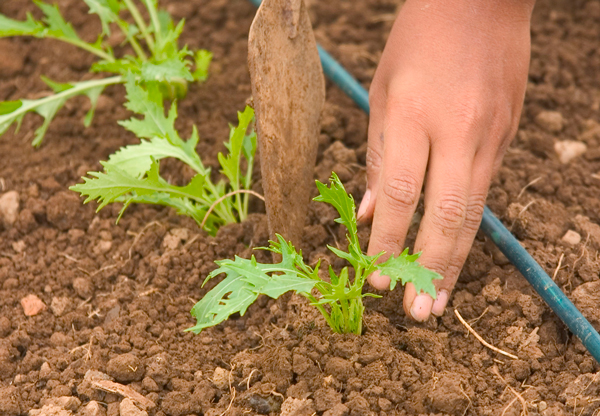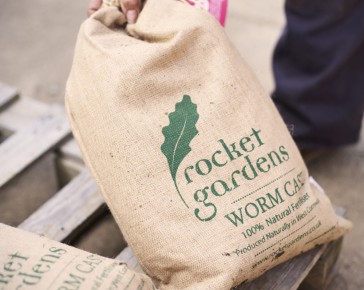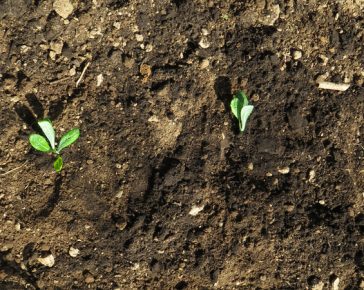There are four main types of soil: clay, sandy, loam and silt. Whichever type of soil you have you will be able to successfully grow veg, you just need to handle the soil a little differently to get the best results.
How to test to see what type of soil you have:
On a day when the soil is neither waterlogged nor completely dried out, go out into your garden and get a bit of earth in your hands. Roll it in your hands and rub it between your fingers to feel its texture. Try adding a little water and rolling it into a ball and then into a sausage.
What the results mean:
Does it easily roll into a sausage and holds its shape well? And it’s quite heavy feeling and sticky? You’ve probably got clay soil.
Does it feel gritty between the fingers? Is it difficult to roll into a ball? You’ve got sandy soil.
Does it roll easily into a ball but doesn’t hold a sausage shape well? Does it feel bit soapy and slippery? That’ll be silt. (It’s quite rare for a garden to have this type, so worth testing it again just to make sure it’s not clay.)
Does it just feel lovely and light and airy? Does it look nice and crumbly? Does it roll into a ball but won’t hold its shape? Lucky you, you’ve got loam!
The pros and cons of the different soil types:
Clay: It’s really rich in nutrients, it’ll keep its moisture well during the summer and most veggies will grow well in it. In a long drought it’ll harden up and crack. It doesn’t drain well so in wet weather it can get waterlogged quite quickly. It takes a while to warm up in the spring so most plant growth will happen a little later in the season.
Sandy: It doesn’t retain nutrients very well and is quick to dry out in warm weather during the summer. It warms up in the spring very quickly so you can usually get growing for an early crop. It’s good for winter growing because it drains well and doesn’t get waterlogged.
Silt: It drains well but doesn’t dry up too quickly in the summer either. This is good. It’s got lots of nutrients too. It is easily compacted if you trample on it, which ain’t so great for plants.
Loam: It’s the perfect blend of clay and sandy. It’s got lots of nutrients, it holds moisture well but drains well too. It warms up early on in spring and stays warm longer.
How to improve the different soil types:
Clay:
- Adding lots of organic matter (well rotted manure, compost etc) helps to break the clumpy clay down a bit making it more crumbly. This helps the plants to get easier access to water and nutrients.
- Keep beds well watered during dry spells to avoid the top soil from hardening and cracking.
- It’s worth popping a sheet of plastic or horticultural fleece over beds during the winter to get them to warm up quicker in the spring.
Sandy:
- Give the soil a nutrient boost by adding plenty of organic matter like well rotted manure or compost before planting in spring.
- When planting, add a handful of worm cast fertiliser to give the plants a long-term source of nutrients.
- Mulching will really help with moisture retention during the summer.
- A liquid feed during the growing season will benefit most veg plants.
Silt:
- Avoid trampling on the soil as this will compact it and make it difficult for plants to grow. Lay a wooden board over areas where you need to walk.
- Dig in lots of organic matter to break the soil up a bit.
Loam:
- You don’t need to do much to loamy soil at all other than replenish nutrients before replanting for spring – a good addition of well rotted manure or compost should do the trick, or add a handful of worm cast fertiliser when planting.



